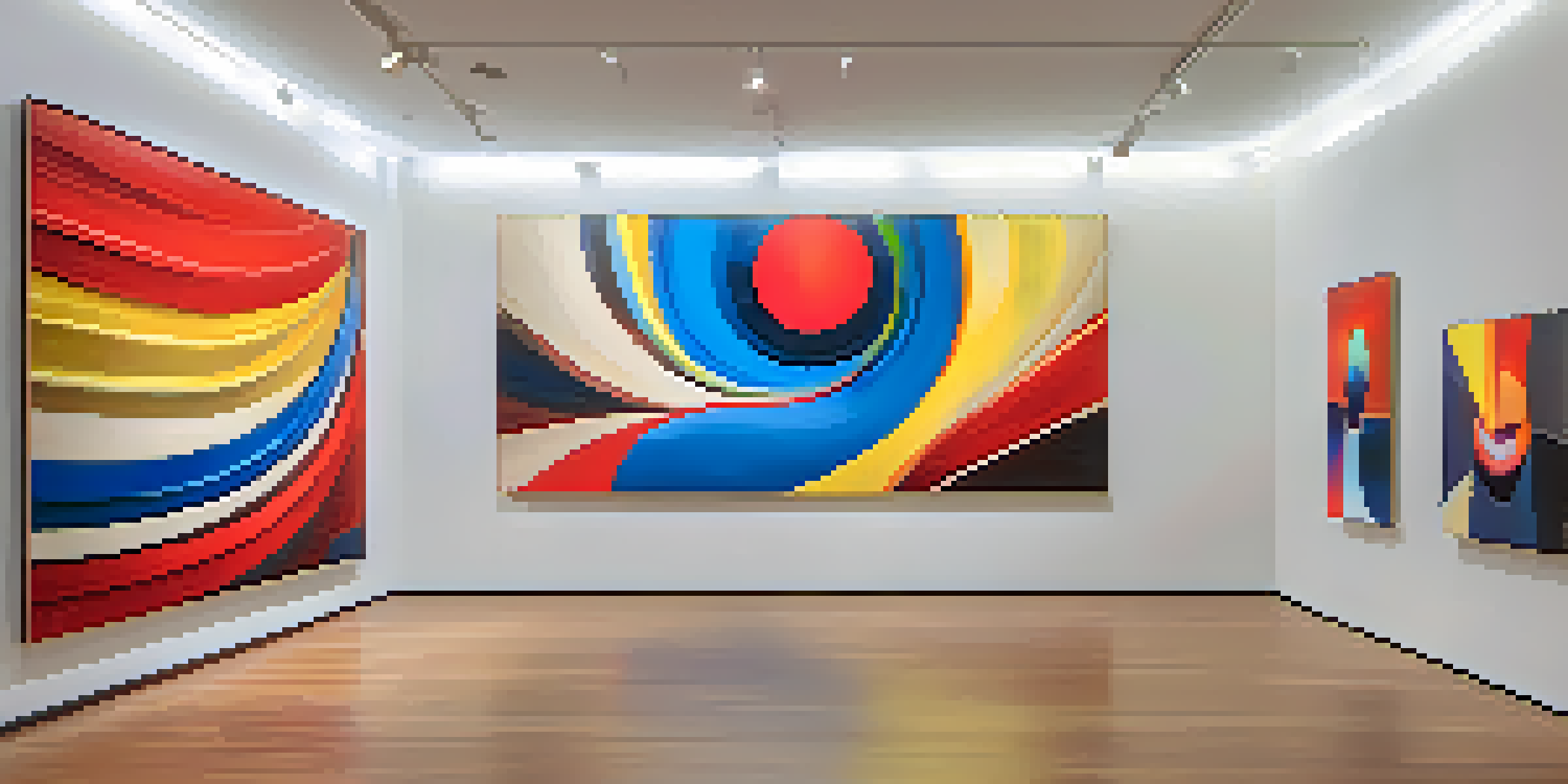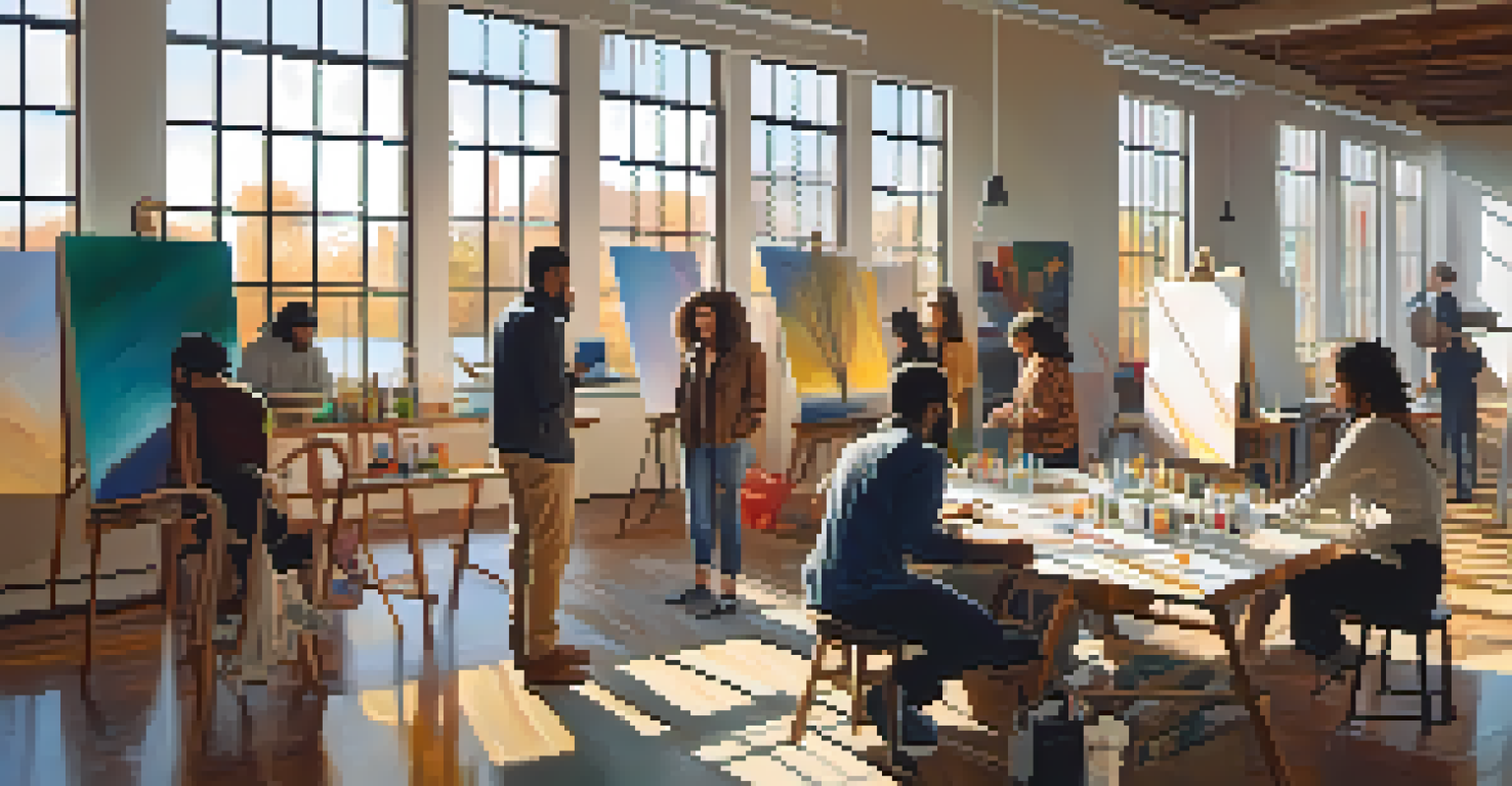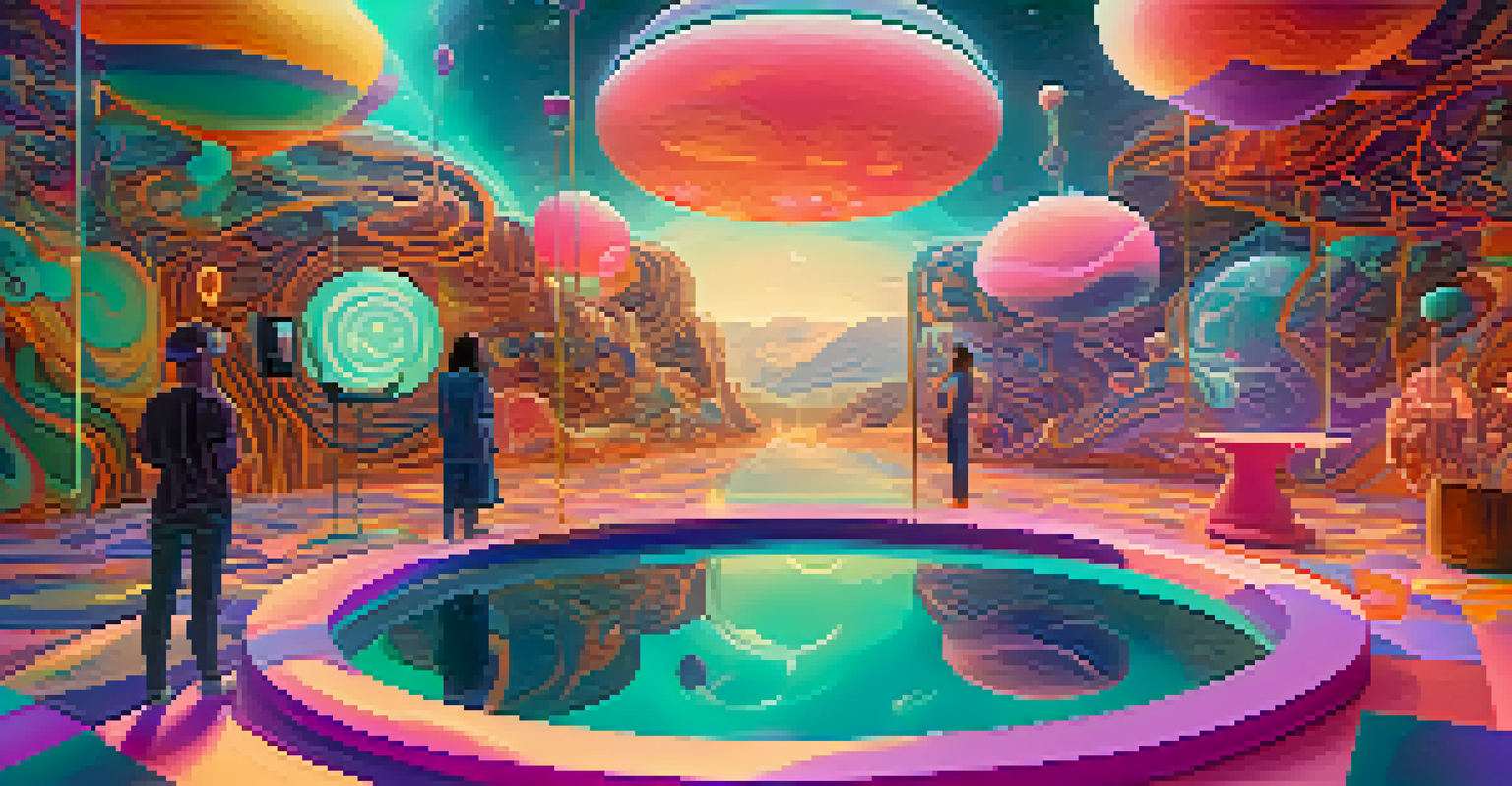Collaborative Projects: Artists Merging Sound and Visual Arts

The Rise of Collaborative Art Projects in Modern Culture
In recent years, collaborative art projects have gained immense popularity, particularly at the intersection of sound and visual arts. This trend highlights how artists from diverse backgrounds can come together to create immersive experiences that captivate audiences. By merging different mediums, these artists push the boundaries of creativity, inviting viewers into a multi-sensory journey.
Art is not a thing; it is a way.
For example, think of an art installation that features both vibrant paintings and an accompanying soundscape. Visitors might find themselves mesmerized not just by the visuals but also by the auditory experience that enhances the overall atmosphere. This fusion of disciplines not only enriches the artwork but also deepens the emotional impact on the audience.
As the art world evolves, collaborative projects help to foster a sense of community among artists. They create opportunities for dialogue and experimentation, encouraging new ideas to flourish and inspiring future generations to explore the limitless possibilities of artistic collaboration.
Key Benefits of Merging Sound and Visual Arts
One of the most significant benefits of merging sound and visual arts is the creation of immersive experiences. Artists can evoke emotions and tell stories in ways that single mediums cannot achieve alone. This combination allows audiences to engage with art on multiple levels, making it more memorable and impactful.

Additionally, collaboration can spark innovation. When artists from different disciplines join forces, they bring unique perspectives and skills to the table. This diversity often leads to groundbreaking concepts that might not have emerged in a more traditional, solitary approach to art.
Collaboration Fosters Creativity
Merging sound and visual arts allows artists to create immersive experiences that evoke emotions and tell stories in innovative ways.
Moreover, such projects promote inclusivity and accessibility in the arts. By reaching out to diverse groups and encouraging participation, artists can ensure that their work resonates with a broader audience. This sense of community can further enhance the cultural richness of the artwork, making it more relatable and meaningful.
Spotlight on Notable Collaborative Projects
One prime example of a successful collaboration is the partnership between visual artist Olafur Eliasson and composer Nils Frahm. Their project, 'Your Unexpected Gift,' combined stunning visuals with a dynamic soundscape, creating an experience that left audiences in awe. This kind of artistic synergy showcases the power of collaboration in pushing creative boundaries.
Creativity is the power to connect the seemingly unconnected.
Another noteworthy project is 'The Sound of Color,' where artists explored the relationship between color and sound through installations that changed in response to musical compositions. This innovative approach allowed visitors to see and hear art in a completely new light, emphasizing the interconnectedness of different art forms.
These collaborations not only highlight the talent of the artists involved but also invite audiences to think critically about how they perceive art. By witnessing the interplay between sound and visuals, viewers are encouraged to reflect on their personal experiences and interpretations.
How Technology Enhances Collaborative Art Projects
Technology plays a crucial role in facilitating collaborative art projects. Digital tools allow artists to experiment with sound and visuals in ways that were previously unimaginable. For instance, software can enable real-time synchronization between audio and visual elements, creating a seamless experience for the audience.
Virtual and augmented reality have also changed the game, offering immersive environments where viewers can interact with the artwork. These technologies allow artists to break free from traditional gallery spaces, reaching wider audiences and creating engaging experiences that can be shared online.
Technology Expands Artistic Reach
Digital tools and platforms enable artists to collaborate more effectively and reach wider audiences through immersive experiences.
Moreover, social media platforms provide artists with a space to showcase their collaborative efforts and connect with fans. This democratization of art allows for more diverse voices to be heard, leading to richer, more varied artistic expressions.
Challenges Faced by Collaborative Artists
While collaborative projects can be incredibly rewarding, they also come with their own set of challenges. One significant hurdle is the potential for creative differences among artists. When individuals with unique visions come together, it can sometimes lead to conflicts over direction and execution.
Another challenge is the logistical aspect of collaboration. Coordinating schedules, resources, and ideas can be daunting, particularly when artists are working across different locations or time zones. Effective communication is key to ensuring that everyone remains on the same page throughout the creative process.
Additionally, artists may face the risk of losing their individual identity in collaborative works. It's essential for artists to find a balance between contributing to a shared vision and maintaining their unique artistic voice to ensure that their contributions are recognized and valued.
The Future of Collaborative Art Projects
Looking ahead, the future of collaborative art projects appears bright, particularly as artists continue to embrace new technologies and innovative approaches. As more creators recognize the value of collaboration, we can expect to see an even greater blending of sound and visual arts. This evolution will undoubtedly lead to exciting, groundbreaking works that challenge our understanding of art.
Educational institutions are also beginning to prioritize collaborative practices in their curricula. By teaching students the importance of working together and sharing ideas, future generations of artists will be better equipped to tackle complex themes and create impactful works.
Challenges in Collaborative Art
Creative differences, logistical issues, and the risk of losing individual identity are common challenges faced by artists in collaborative projects.
Ultimately, these collaborations have the potential to shape the cultural landscape by bridging gaps between different artistic disciplines and fostering a sense of unity among artists. As they continue to explore new frontiers, the possibilities for sound and visual arts merging are limitless.
How to Get Involved in Collaborative Art Projects
If you're an artist looking to dive into collaborative projects, there are several ways to get started. Begin by networking with other artists in your community or online. Joining local art groups or attending workshops can help you discover like-minded individuals who share your passion for collaboration.
Another avenue is to participate in art residencies or festivals that focus on interdisciplinary work. These events often encourage artists to experiment with different mediums and collaborate with others, providing an excellent platform for creative exploration.

Lastly, don't hesitate to reach out to artists whose work you admire. Collaboration can be as simple as proposing a joint project or even just exchanging ideas. The key is to remain open to new experiences and embrace the synergy that comes from working together.